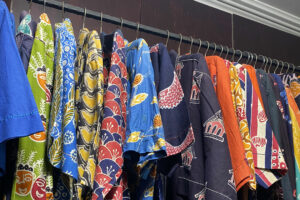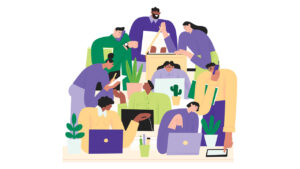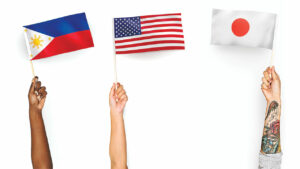Batik Gobang preserves traditional Indonesian art

JAKARTA — Batik Gobang, a traditional garment shop in Jakarta, is keeping Indonesian art and culture alive as well as the livelihoods of many deaf and blind locals.
“The persons with disabilities that we hire are locals that can have a second chance to reintegrate into society through our batik,” Ethys Mayoshi, who owns Batik Gobang, told BusinessWorld in Bahasa Indonesian.
Ms. Mayoshi said her blind and deaf employees can skillfully craft clothing and other fabric designs on premade templates despite their impairments.
She said the most intricate and painstaking batik designs take up to a month to create, while simpler pieces can be done in 10 days.
Batik Gobang, located in Ms. Mayoshi’s residence in West Jakarta, has a staff of about 60 people, mostly women making the batik products.
The designs are inspired by the local flora and fauna found in Jakarta and Central Java. Ms. Mayoshi noted that her batik designs are also based on the Betawi culture, the indigenous people of Jakarta.
The batik patterns are made by creating an outing of a design onto a white cloth with a tjanting, a tool that holds melted candle wax. The outlines are then colored in various colors of dye.
Batik Gobang routinely holds workshops that give visitors a walkthrough on how to create their own batik designs and the tedious process of waiting for the wax to melt away, revealing their own unique design.
The shop’s handmade batik shirts, blazers, and skirts range in price from P6,000 to P30,000. The Jakarta shop also supplies batik products to the Jakarta City Government Tourism Office.
Ms. Mayoshi said her shop aims to give locals a sense of community and solidarity by keeping the time-honored tradition of crafting batik alive.
In 2009, the United Nations Educational, Scientific and Cultural Organization (UNESCO) added the art of making Indonesian Batik to its Intangible Cultural Heritage of Humanity list.
“The craft of batik is intertwined with the cultural identity of the Indonesian people and, through the symbolic meanings of its colors and designs, expresses their creativity and spirituality,” according to UNESCO’s website. — John Victor D. Ordoñez
BusinessWorld traveled to Jakarta as a guest of the Indonesian Embassy in Manila and participated in a batik design workshop.




